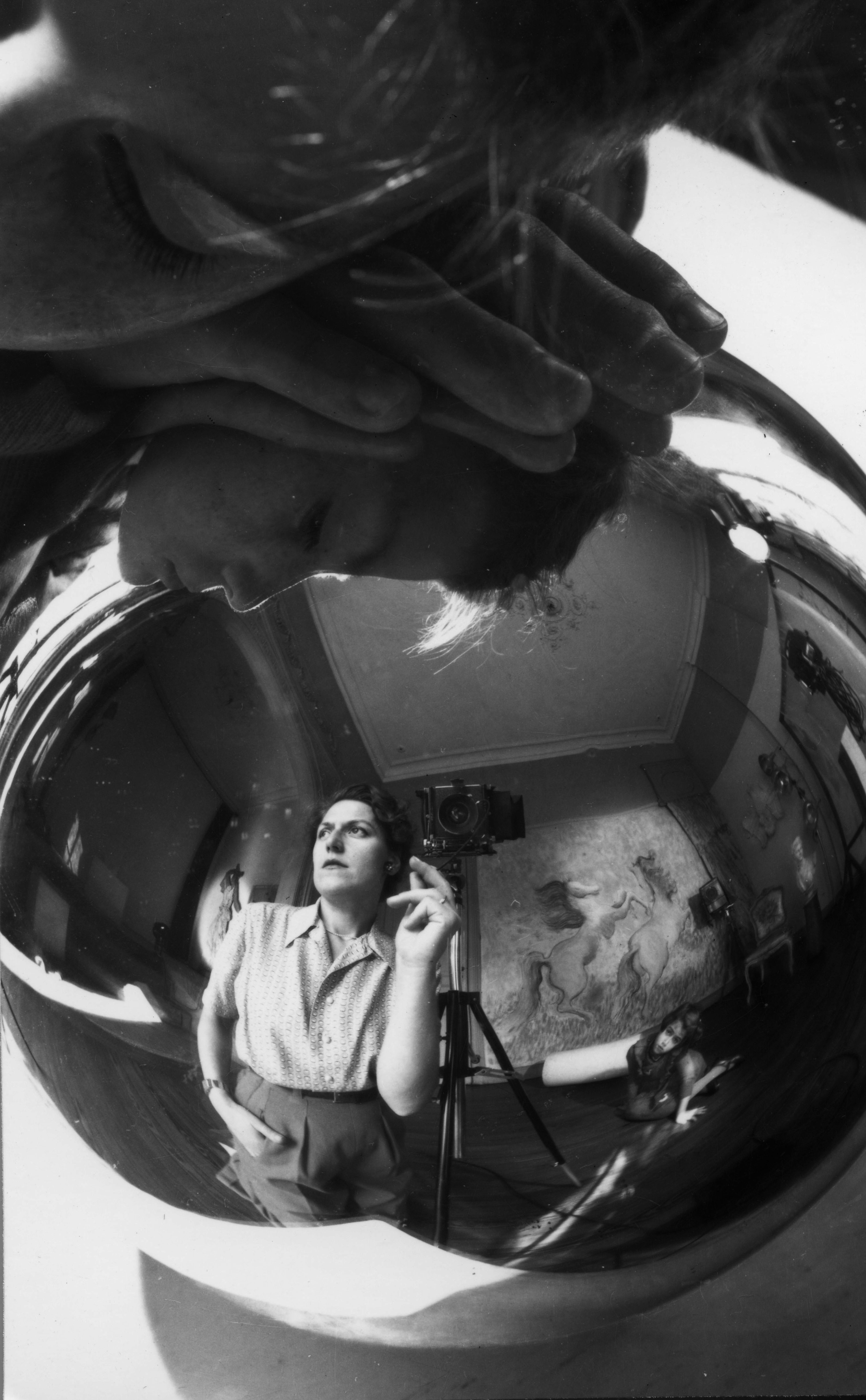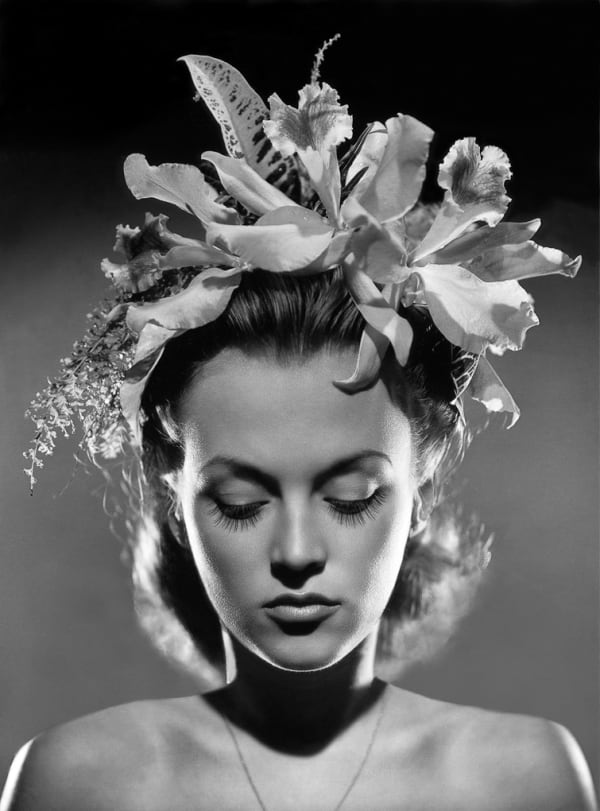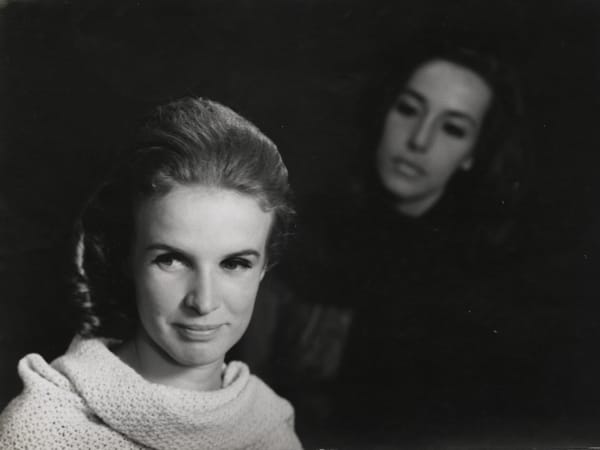-
-

Annemarie Heinrich* (1912 - 2005)
Born in 1912, in Germany, Annemarie Heinrich emigrated with her family to Argentina, in 1926. Shortly thereafter, the family moved to Buenos Aires where Annemarie worked as an apprentice in several studios of European-origin photographers, starting her career at the age of 18, when she opened her own studio. Annemarie Heinrich was soon recognized for her technical excellence in lighting, becoming one of the most sought-after portraitists of Buenos Aires’ high society, intellectuals and artists, for over six decades.
In the realm of photo clubs, Annemarie Heinrich participated in the creation of the Foto Club Argentino, in 1936, and was one of the founders of the Foto Club Buenos Aires, in 1947. She presented her work in numerous national and international exhibitions and art salons. She regularly participated in the International Salon of Photographic Art of São Paulo, organized by the FCCB, association that sponsored a major exhibition of her work at the São Paulo Museum of Art (MASP), in 1951. In the following year, she created, along with other prominent photographers, the group La Carpeta de los Diez, as a reaction to the academic environment that then took over the photo clubs. Annemarie Heinrich remained active until 1995, dying in 2005. She is widely recognized nowadays for having made fundamental contributions to the construction of female identity and for having taken part in the struggle against patriarchal hegemony in the art world.
* Utópica represents the work of Annemarie Heinrich only in Brazil, in partnership with Galeria Vasari, representative of the photographer's collection worldwide.
-
-
 Annemarie Heinrich, Autorretrato com filhos / Self-portrait with children, 1945
Annemarie Heinrich, Autorretrato com filhos / Self-portrait with children, 1945 -
 Annemarie Heinrich, Desnudo XXXVII / Naked XXXVII, 1934
Annemarie Heinrich, Desnudo XXXVII / Naked XXXVII, 1934 -
 Annemarie Heinrich, Jovem solarizado / Young man solarized, 1954
Annemarie Heinrich, Jovem solarizado / Young man solarized, 1954 -
 Annemarie Heinrich, Pernas e mãos da bailarina. Tony Lander, primeira bailarina do English National Ballet. / Ballerina’s legs and hands. Tony Lander, first ballerina of English National., 1959
Annemarie Heinrich, Pernas e mãos da bailarina. Tony Lander, primeira bailarina do English National Ballet. / Ballerina’s legs and hands. Tony Lander, first ballerina of English National., 1959 -
 Annemarie Heinrich, Savia, atriz Elsa Daniel / Savia, Elza Daniel actress, 1953
Annemarie Heinrich, Savia, atriz Elsa Daniel / Savia, Elza Daniel actress, 1953 -
 Annemarie Heinrich, Ursula Heinrich com orquídeas / Ursula Heinrich with orchids, 1943
Annemarie Heinrich, Ursula Heinrich com orquídeas / Ursula Heinrich with orchids, 1943
-
-

Dulce Carneiro (1929 - 2018)
Born in Atibaia, a small town near São Paulo, Dulce Carneiro (1929 - 2018) was a poet, journalist, designer and photographer. At the age of twenty, after having participated in the artistic and literary scene of her hometown, she moves to São Paulo in search of new experiences and career opportunities. In the 1950s, she soon joined the local society, approaching Flávio de Carvalho and Yolanda Penteado, among other personalities.
At the end of the 1970s, she took a turn in her career and began to work with enthusiasm in architecture and industry photography, traditionally dominated by men. Among the various and prominent architectural firms that hired her services, Oscar Niemeyer stands out, for whom she photographed nearly all residential projects. In 1978, she received the “Communication Arts Magazine” award in New York for the best photographic work published in the Architectural Digest magazine the previous year (December, 1977). In the FCCB, Dulce Carneiro was active between 1951 and 1971. In the early 1990s, disenchanted with photography and complaining about a growing lack of recognition for her work, which she attributed in part to the variety of activities she developed in photography, Dulce destroyed her entire archive of negatives, photographs, newspaper clippings and other documents on her artistic and professional trajectory.
-

Alice Kanji (1918 - 1992)
Born in Bauru, state of São Paulo, Alice Kanji (1918 - 1992) joined the FCCB in 1951, to accompany her husband. Tufy Kanji was in charge of the FCCB studio, where he produced portraits, and Alice would help him in the preparation of the models. It took little time for Alice to start her own trajectory that lasted a little over thirty years, having been very active until the beginning of the 1980s; she continued to photograph and participate in the FCCB even after Tufy’s death.
-
-
 Alice Kanji, Arquitetura / Architecture, década de 1960 / 1960s
Alice Kanji, Arquitetura / Architecture, década de 1960 / 1960s -
 Alice Kanji, Composição / Composition, circa 1955
Alice Kanji, Composição / Composition, circa 1955 -
 Alice Kanji, Composição com trigo / Composition with wheat, década de 1960 / 1960s
Alice Kanji, Composição com trigo / Composition with wheat, década de 1960 / 1960s -
 Alice Kanji, Duas Gerações / Two generations, circa 1968
Alice Kanji, Duas Gerações / Two generations, circa 1968 -
 Alice Kanji, Garoto Peralta / Rascal Boy, década de 1970 / 1970s
Alice Kanji, Garoto Peralta / Rascal Boy, década de 1970 / 1970s -
 Alice Kanji, Selênica / Selenic, década de 1970 / 1970s
Alice Kanji, Selênica / Selenic, década de 1970 / 1970s -
 Alice Kanji, Sem título / Untitled, década de 1970 / 1970s
Alice Kanji, Sem título / Untitled, década de 1970 / 1970s -
 Alice Kanji, Sem título / Untitled, década de 1950 / 1950s
Alice Kanji, Sem título / Untitled, década de 1950 / 1950s
-
-
Por ocasião da publicação do catálogo da exposição, em agosto de 2020, a Utópica transmitiu duas conversas sobre temas ligados à exposição. Em novembro, foi gravada uma terceira conversa uma conversa ao vivo, entre o diretor da galeria, Pablo Di Giulio, e a docente e curadora do Museu de Arte Contemporânea da Universidade de São Paulo, Helouise Costa, autora do texto crítico que acompanha a presente exposição “Presenças efêmeras: mulheres fotógrafas no Foto Cine Clube Bandeirante”.
-
Ephemeral presences: women photographers at Foto Cine Clube Bandeirante
Helouise Costa professor and curator of the Museum of Contemporary Art of the University of São Paulo (MAC USP) in: Three authors of the gentler sex. Utópica (2020)[...] Regarding the Foto Cine Clube Bandeirante’s stance on women during the investigated period, a strong ambivalence in actions and discourses is observed. Such was the case with the creation of the “Women’s Section”. According to Eduardo Salvatore, then club president, the “goal was to stimulate women’s participation in photography”. Without the expected admission, he chided the women
themselves, claiming their lack of willingness to take to the streets to photograph. It is difficult to assess the extent to which club leaders were willing to offer conditions so that women could overcome the existing barriers to their work as photographers at the time. The lack of personal financial resources for equipment purchase, restrictions on free circulation in public spaces and the impossibility of attending courses and meetings – usually held at night – are some of the obstacles imposed on them. [...]
-
-
Three authors of the "gentler sex": Alice Kanji, Dulce Carneiro and Annemarie Heinrich
Current viewing_room




















